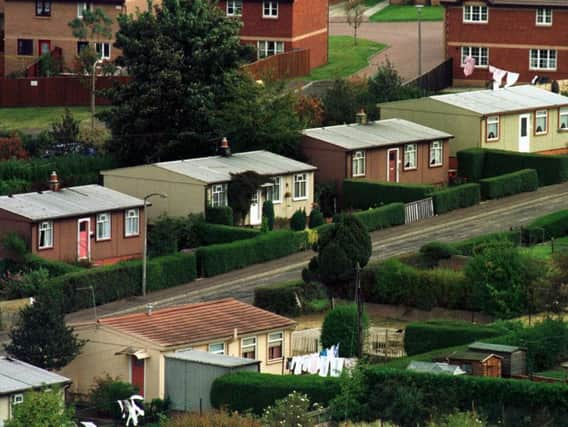When Scotland embraced the brave new prefab world


They offered a brave new world of housing following the Second World War – and most importantly, for many, the luxury and privacy of an indoor toilet for the first time.
More than 32,100 prefab “bungalows” were built in Scotland between 1945 and 1966 in a bid to stem the housing crisis that deepened during World War Two.
Advertisement
Hide AdAdvertisement
Hide AdThey sprung up on parks and open spaces – and in some cases, bomb sites. A fine community spirit was reported by some who moved into these colonies of modern metal-framed structures that were usually clad in timber or pebbles.
Rotten housing had been a concern across the country for decades. When conscripts repeatedly turned up underweight and undernourished, overcrowded and unsanitary homes were identified as part of the problem, said Dr Kenneth Leitch, Civil Engineering Programme Leader at Edinburgh Napier University.
Around half a million new homes were needed in Scotland by 1949, with work intensifying to create housing that was both cheap to build and quick to put up. Bricklaying had already been identified a labour-intensive task that should be avoided.
And so the prefab was created – with factories springing up over Scotland, from Bellshill to Sighthill and Perth – to meet demand. It was said that 12 semi-skilled men could put up a prefab on site in an hour.
Prefabs were built round a central core, or service unit, which was designed by the Ministry of Works to supply utilities to the kitchen, toilet and bathroom. They were designed with a lifespan of 10 to 15 years, but many were lived in far longer than that.
Indeed, a number of prefabs can still be found on Scotland’s streets today. A line of “Swedish Houses”, which were built all in wood, stands on West Pilton Place in Edinburgh. And a cluster of prefab homes still exists close to the shopping centre at Wester Hailes.
Dr Leitch added: “The connotation was that they were cheaply built and they all look the same. The quality was variable. Both good and bad could be found.”
Prime Minister Winston Churchill championed the prefab with a pledge to create 500,000 “modern cottages” in March 1944. The Emergency Factory Made Homes Plan was launched.
Advertisement
Hide AdAdvertisement
Hide AdWhere industry had been immersed in meeting the needs of war, it was soon to be immersed into housing production, with factories converted for the job.
“Industry was geared towards war production, such as producing parts for tanks and guns. The materials for this were much like the materials needed for housing, such as light gauge steel and aluminium, with tasks repeated again and again. It is the same thing with prefab housing.”
The prefabs were vulnerable to storm damage, with roofs often disappearing in high winds, and leaks common. Toilets sometimes flushed with hot water.
Around half of all prefabs built in Scotland between 1945 and 1966 were torn down by the end of that period.
The houses went, but the move towards new modern housing had just begun.